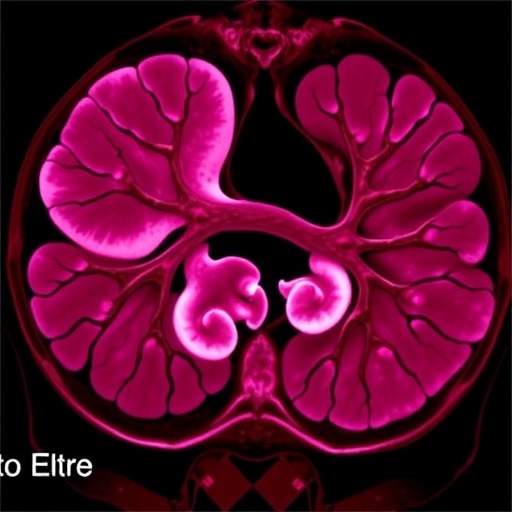In a striking discovery that reshapes the landscape of pediatric cardiology, researchers have identified a rare case in which Takotsubo syndrome emerged as the initial presentation of pheochromocytoma in young children. This groundbreaking research, carried out by Huang, Zhang, and Yan, offers critical insights into a condition that is predominantly recognized in older adults but now shows a lamentable propensity to affect younger populations as well.
Takotsubo syndrome, often referred to as “broken heart syndrome,” is a transient heart condition that mimics myocardial infarction, or heart attack. It is typically precipitated by emotional or physical stress, leading to symptoms such as chest pain and shortness of breath. The intricacies of this syndrome involve a weakening of the heart’s left ventricle, causing characteristic ballooning that can have dire repercussions if not addressed promptly.
Pheochromocytoma is a rare tumor of the adrenal gland, which secretes excess catecholamines—hormones that include adrenaline. Such excess can precipitate hypertension and other serious health problems. The correlation between pheochromocytoma and Takotsubo syndrome presents a perplexing puzzle for clinicians, especially in children where neither condition is common.
The reported case details a young child who exhibited symptoms consistent with Takotsubo syndrome, followed closely by the diagnosis of pheochromocytoma. This unusual sequence of events prompted the medical team to delve deeper into the potential connections between these conditions. The child’s clinical findings, which were initially alarming, led to a series of exams, including imaging studies and biochemical assessments.
Emerging from this case is a vital understanding of how stressors—both physiological and psychological—can unveil hidden health issues. For children, such stress can take various forms, from trauma to chronic illness, and can lead to physiological responses that may manifest as severe cardiac complications like Takotsubo syndrome. This connection underscores the importance of monitoring cardiovascular health in pediatric patients with known stressors.
Further, the research poses significant implications for the understanding of hormonal regulation in pediatric patients. The interplay of hormones produced by pheochromocytomas could serve as a trigger for cardiac dysfunction via pathways that have yet to be fully unraveled. This raises questions regarding how often these two conditions might go undiagnosed in children who present with ambiguous symptoms.
As the literature on pediatric pheochromocytoma remains sparse compared to that of adults, this case study sets a precedent for future inquiries. The authors emphasize that early detection and management are crucial. In this case, the child’s successful recovery hinged upon quick action by healthcare professionals who recognized the importance of a multidisciplinary approach in treating complex cases.
In examining the broader implications of this study, it becomes clear that awareness is fundamental. Parents and pediatricians alike must be vigilant for signs of stress-related cardiac issues in children, especially those who may have underlying conditions such as endocrine disorders. Increased awareness could facilitate earlier intervention and better outcomes for young patients.
The publication of this case report in BMC Pediatrics serves as a call to action for both clinical and academic communities. It highlights the need for more comprehensive research into rare pediatric conditions and the potential risks they pose. As the medical field continues to evolve, investigations like these will be key to unlocking mysteries surrounding less common presentations of established conditions.
In conclusion, the case of Takotsubo syndrome as the initial manifestation of pheochromocytoma in a young child is a poignant reminder of the dynamic and multifaceted nature of pediatric health. This emerging narrative not only broadens the understanding of these conditions but also underscores the need for continued vigilance, research, and innovation in pediatric cardiology. As medical professionals work tirelessly to unravel these complexities, the hope is that insights gained from such cases will lead to improved diagnostic tools, treatments, and ultimately, better patient outcomes.
As we progress further into a future where healthcare advances can offer preventive measures for such rare but serious conditions, it is imperative that we remain cognizant of the delicate interplay between physical and emotional health. The story of this child serves not only as a cautionary tale but also as an inspiring call for deeper exploration and understanding in pediatric medicine.
Subject of Research: Takotsubo syndrome as an initial presentation of pheochromocytoma in young children.
Article Title: Takotsubo syndrome as initial presentation of pheochromocytoma in young children: case report and literature review.
Article References:
Huang, E., Zhang, T., Yan, X. et al. Takotsubo syndrome as initial presentation of pheochromocytoma in young children: case report and literature review.
BMC Pediatr 25, 805 (2025). https://doi.org/10.1186/s12887-025-06187-2
Image Credits: AI Generated
DOI: 10.1186/s12887-025-06187-2
Keywords: Takotsubo syndrome, pheochromocytoma, pediatric cardiology, adrenal tumors, broken heart syndrome, catecholamines.




